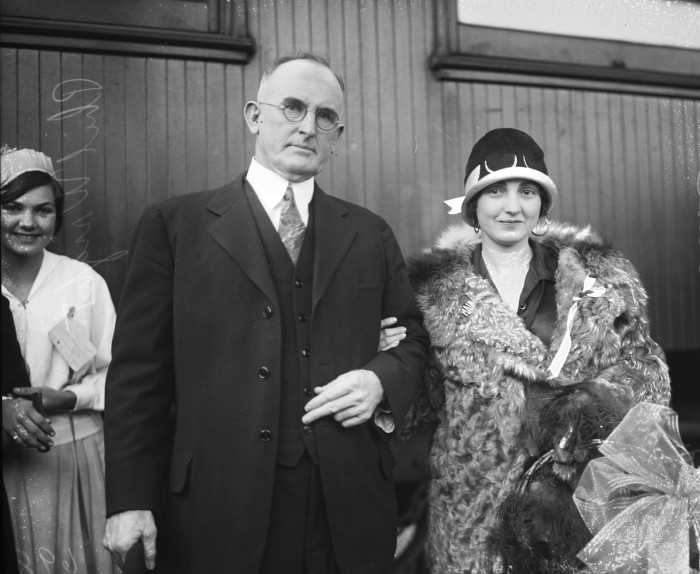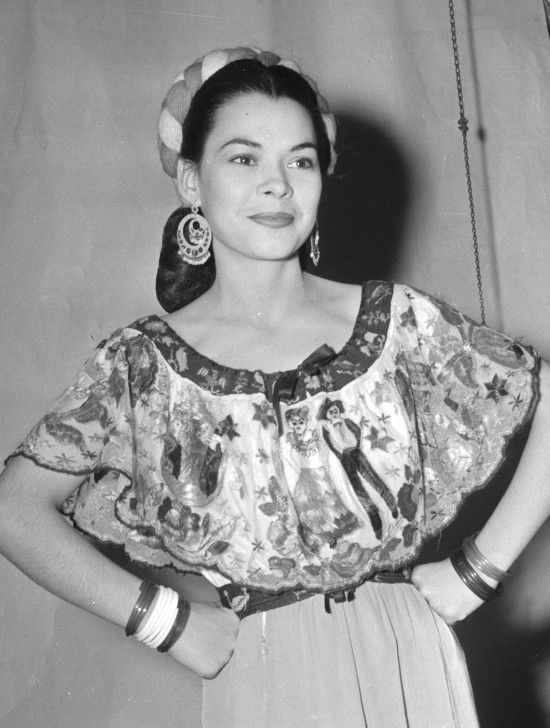San Antonio’s Women in Music, 1920s to 1940s
During this Women’s History Month, we show photographs of some of the local women who contributed to the field of music during the period after World War I through the 1940s. These women shared their musical talents through various activities, from classical music performances to radio broadcasting. Some are remembered only by the local community. Others achieved international fame and their recordings are still commercially available.
These photographs, from our San Antonio Light Photograph Collection (MS 359), were all taken by the newspaper’s staff photographers.

Lydia Mendoza, “The Lark of the Border,” poses with her guitar at the time she was appearing at the Nacional Theater in San Antonio, January 1948. (MS 359: L-3514-A). Mendoza (1916-2007), the first star of recorded Tejano and Norteno music, began singing publicly in San Antonio in the late 1920s. By 1934, she had achieved national attention through her recordings and radio performances. She received the National Medal of Arts and numerous other awards.

Acting mayor Phil Wright welcomes Josephine Lucchese home following her appearances in New York and Philadelphia in the opera “Rigoletto,” November 1926. (MS 359: L-0698-F). Lucchese (1893-1974), known as the “American Nightingale” in Europe, gave both opera and concert performances during the 1920s and 30s.

Rosa Dominguez, coloratura soprano, stands next to WCAR microphone at the time she was performing songs of her native Mexico, November 1925. (MS 359: L-0349-A). Dominguez later appeared in New York and regularly on Border Radio, where she received the title “The Mexican Nightingale.”

Violet Hilton (left), a saxophonist, and Daisy Hilton, a violinist, seated in their home on Vance Jackson Road, January 1931. (MS 359: L-395-I). The Hilton Siamese twins (1908-1969) toured the country performing in sideshows, vaudeville, and cabarets during the 1920s and 30s.

Anna Goodman Hertzberg poses at her annual Christmas party for members of the Tuesday Musical Club and Chaminade Choral Society, December 1933. Hertzberg (1862-1937), a pianist trained at the New York Conservatory of Music, founded the Tuesday Musical Club for women to perform and study classical music. The Tuesday Musical Club Records are housed in UTSA Libraries Special Collections at Main Campus: http://www.lib.utexas.edu/taro/utsa/00225/utsa-00225.html

Eva Garza, former student at Lanier High School, sings on stage at El Nacional Theater on East Commerce Street, May 1939. (MS 359: L-1583-A). By the 1940s, Garza (1917-1966) was appearing weekly in New York for CBS Radio’s “Viva America” and on the “Voice of America.” She was known to U.S. soldiers as “the Sweetheart of the Americas.”

The Read Sisters (left to right) Floy, Donald Ruth, and Martha pose on the stairway of their home on Post Avenue at the time they sang weekly on WOAI Radio’s “Saturday Night Parade,” September 1939. (MS 359: L-2248-C). The trio, originally from Corpus Christi, later toured the country with Olsen and Johnson’s Hellzapoppin’ revue.

Lois Farnsworth Kirkpatrick (Hull) sings with the String Players in the ballroom of the St. Anthony Hotel, March 1939. (MS 359: L-2073-C). Hull (1926-2014), later a resident of Canyon, Texas, acted and sang for many years in the musical drama “Texas.”

Rosita Fernandez (Almaguer) poses in a traditional folk dress shortly before she sang Mexican ballads in a show at La Villita, July 1944. (MS 359: L-3132-A). Fernandez (1919-2006) became a local radio star in the early 1930s, and later appeared on television and in movies. Lady Bird Johnson gave her the title “San Antonio’s First Lady of Song.” The Rosita Fernandez Collection is housed in UTSA Libraries Special Collections at Main Campus: http://www.lib.utexas.edu/taro/utsa/00043/utsa-00043.html

Bea Morin (Svercel) seated at piano during a return visit to play in the St. Anthony Hotel lobby, where she played regularly for over a decade as a young woman, July 1952. (MS 359: L-4377-A). Morin (1910-2007), a regular local radio performer in the late 1930s and early 1940s, moved with her husband to New York and played organ for live television programs in the 1950s.



Reblogged this on stillness of heart.
Reblogged this on The Militant Negro™.
Reblogged this on Rogues & Vagabonds.
Wow…I’ve never heard of any of those women. Thank you for bringing them to my attention.